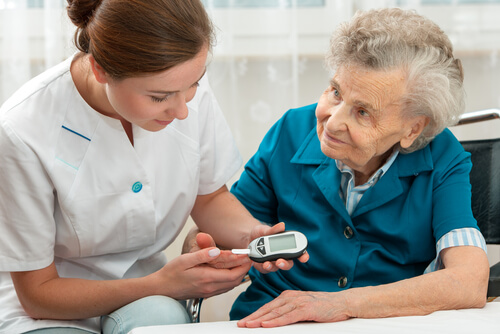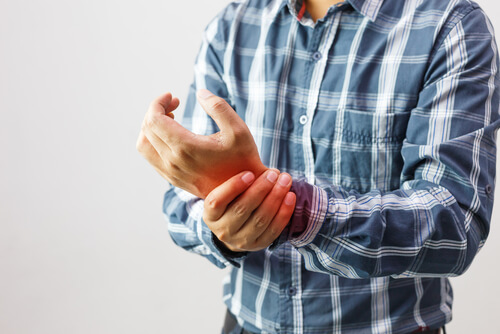
10 Facts About Heart Disease Every Senior Should Know
Heart disease is the leading cause of death in the United States. It is an umbrella term for a number of different types of heart conditions. The most common type of heart disease is coronary artery disease, which can lead to heart attacks. Other types involve the heart valves or failure of the heart to pump well. Seniors should be aware of the types of heart disease, causes and symptoms in order to talk to their doctor about appropriate prevention and management steps.
Here are 10 facts about heart disease that every senior should know:
Heart Disease Causes
Heart disease is caused by plaque buildup that thickens and stiffens artery walls. This inhibits the flow of blood through the arteries to organs and tissues. In seniors, it can be linked to genetic factors and can also be a result of infections and other conditions. It is often attributed to correctable problems, such as unhealthy diet, lack of exercise, being overweight, and smoking. Arrhythmia, or abnormal heart rhythm, can be caused by coronary artery disease, high blood pressure, diabetes, smoking, excessive alcohol or caffeine intake, drug abuse, stress, or over-the-counter medications.
Main Risk Factors
Age is the number one risk factor for heart disease, because aging increases the risk of weakened or thickened heart muscle. Men are typically at greater risk of heart disease, but the risk for women increases after menopause. If a parent developed heart disease before the age of 55 or 65, patients are also at higher risk for coronary artery disease. Smoking greatly increases the risk, as does a diet that is high in fat, salt, and sugar. Patients with diabetes are at an increased risk and share similar risk factors, such as obesity, physical inactivity, and high blood pressure.
Symptoms
Symptoms will vary between senior men and women. Men are more likely to have chest pain, and women are more likely to have discomfort in the chest along with shortness of breath, nausea, and extreme fatigue. Both men and women might also experience pain, numbness, weakness or coldness in the legs and arms, and pain in the neck, jaw, throat, or back. It’s possible that the disease and symptoms can go unnoticed until they result in a heart attack, angina, or stroke. However, with regular checkups, heart disease can be discovered early and managed.
Treatments
Treatments will vary depending on the condition. But, in general, patients are advised to make lifestyle changes that improve the health of their heart. This includes eating low-fat and low-sodium diets, getting at least 30 minutes of exercise most days of the week, giving up smoking, and reducing alcohol intake. These changes might be accompanied by medications depending on the type of heart disease. If medications aren’t enough, a doctor may recommend surgery or other medical procedures, depending on the type of heart disease and how much damage there is to the heart.
Death Rates
Heart Disease is the third most common cause of ER visits among seniors. About 610,000 people die of heart disease in the United States every year, accounting for one in every four deaths. It is the leading cause of death for both men and women, and happens more often in men. Coronary heart disease is the most common type of disease, killing over 370,000 people each year.
Demographics
Heart disease is the leading cause of death for most ethnicities in the U.S., including African Americans, Hispanics, and caucasians. It is second to cancer for American Indians, Alaska Natives, and Pacific Islanders.
Survival
Early action is the key to preventing or managing a heart attack. The chances of survival are much greater when treatment begins immediately. Only 27 percent of people were aware of all major symptoms of a heart attack and knew to call 9-1-1 when they or someone else was having a heart attack. Early warning signs can include upper body pain, shortness of breath, nausea, cold sweats and lightheadedness in addition to chest pain.
Other Factors
Several other factors come into play that can increase the chances of getting heart disease and having a heart attack. These include high blood pressure, high cholesterol, and smoking. About half of Americans have one of these three factors. Other issues such as diabetes, being overweight and obesity, poor diet, physical inactivity and excessive alcohol consumption can also contribute to heart disease.
Diagnosis
Heart disease is diagnosed by a doctor using a number of different tests. The doctor could perform chest X-rays, coronary angiograms, electrocardiograms (ECG or EKG) and exercise stress tests. Patients and their doctor can decide together which is the right test.
Prevention
Seniors can help to prevent heart disease by taking the proper steps to live a healthier life. Quitting smoking will greatly reduce the chances of worsening heart disease and other conditions. Maintaining a healthy weight and eating a healthy, low-sodium and low-fat diet will put less stress on the heart, along with regular exercise. It’s also important to treat other health conditions, including high cholesterol, high blood pressure and diabetes.
Knowing the signs and symptoms of heart disease can help seniors address any issues early on and reduce the chances of suffering from a heart attack.






